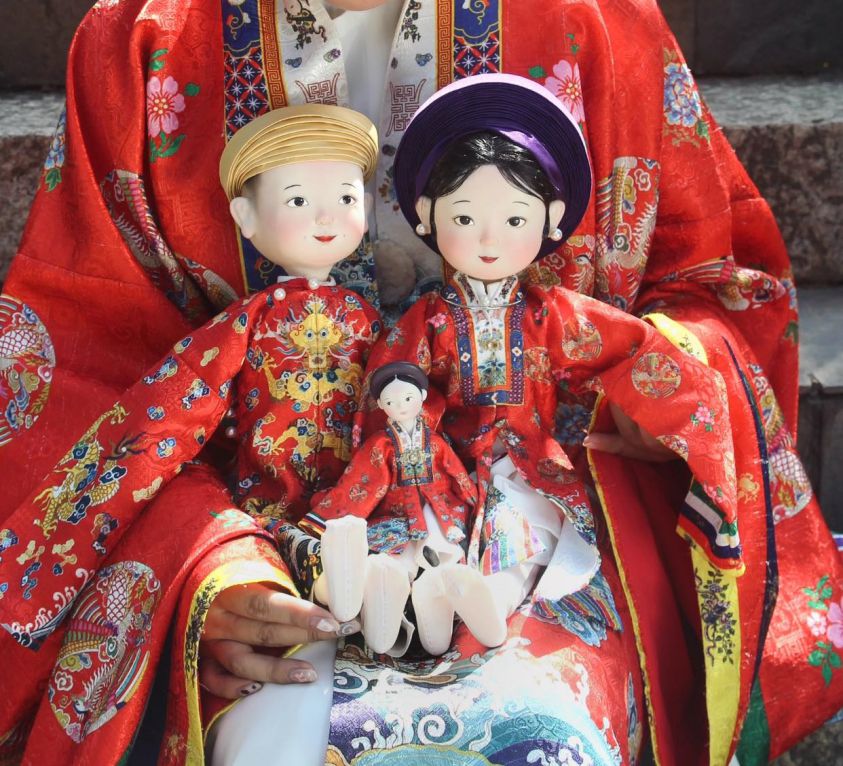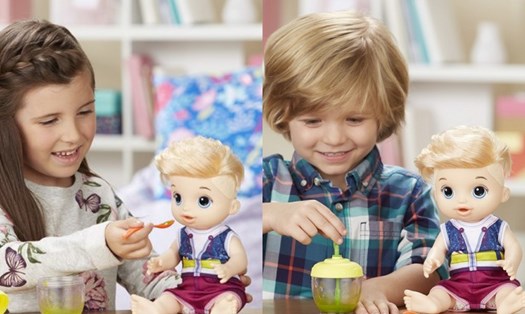From clay to dolls
In grade 6, Thinh Da accidentally learned about the concept and image of bridge jointdoll (also known as BJDoll - Ball Jointed Doll) online. Quickly attracted by the outpouring soul as well as the moving joints and photography of this type of doll, he wished he could soon own such a doll.
Thinh Da revealed: For a 6th grade student like me at that time, bridge jointdoll in the high-end segment, priced at $1,000 or more, was very expensive. Therefore, I decided to buy clay to try and gradually became a passion.
The more he shaped, the younger the younger the younger he felt he had to upgrade his products and wanted the dolls he created to be more beautiful. The works that Thinh Da creates are mainly made from porcelain, polymer and resin.
The stages of creating a bridge jointdoll take time, requiring meticulous craftsmen, from clay, bone frames, soil filling, joint making, grinding, brushing, smoothing, makeup, hair and clothing...
For porcelain dolls, the stages are required to be more complicated, especially in the firing stage. A ceramic bridge joint doll that meets the requirements is usually grilled with 2 to 3 embryos.
On average, a work I make takes 1-2 months, but the first porcelain doll takes up to 3 years because when fired at 1,200 degrees Celsius, it is very easy to crack and break. In that first work, I shaped a doll about 10cm high, with only simple joints such as the shoulders, legs and neck, the face was painted in details and not shaped like now, he said.
Thinh Da pursues a doll style that is more mysterious and mysterious. The most important step is when "breathing in" to create a doll. In each work, he puts a lot of his thoughts and feelings into it.

Sending love to the homeland
Thinh Da often creates portrait dots or portrait collectors, photographers, fashion designers, filmmakers, etc. He is always concerned about the story of spreading Vietnamese culture around the world, constantly upgrading his skills and knowledge.
He shared: I have collected many dots of artists around the world. Each country owns coupons representing their cultural characteristics, but in Vietnam they are not yet available. At that time, I also received a question from a foreign friend: "Does Vietnam have traditional dolls?". Since then, I have had more motivation to make Vietnamese dolls.
Thinh Da often buys and reads books about Vietnamese costumes to serve her work. The young man read so much that he could not remember the names of the books, but there were two books that Thinh Da was most impressed with: "Woven into the Dynasty" and "The Great Festival of Vietnamese Substance under the Nguyen Dynasty 1802 - 1945" (Tran Dinh Son). In addition, he also discussed with members of the Vietnamese-American commune to collect interesting information.
For me, the Vietnamese puppet project is really facing the most difficulties, because there are very few archival documents. However, I still try to research in depth to bring the most perfect works, said Thinh Da.
The first difficulty mentioned is to design the dolls so that they look like Vietnamese people, the simplest, rustic, not too flashy and most importantly, still keeping the Vietnamese soul in the work. For girl's dolls, the requirement is higher: There are all the facades of Vietnamese women but they must still be noble, a little shy and gentle like water.
The next difficulty came from the costumes, there was a period of time when Thinh Da spent 2-3 days going to museums to study each pattern and line on traditional costumes. Because he had to turn the usual patterns on human Vietnamese costumes into another version of a doll on a miniature costume design with only 4 fingers.
In addition, choosing fabric is not easy because small patterns when printed will easily deform; moreover, if you do not know how to choose fabric, the doll shirt will be thick and unsightly.
During more than a year of research and work, he tried and failed many times. Looking back on that journey, Thinh Da believes that each work is a part of his soul.
He expressed: I have brought completely handmade Vietnamese to international friends, and especially a blind friend in the US. Because he could not see, I wrote a braille letter to send with it.
I am also very happy that many Vietnamese people support Vietnamese works. This time I am not using Ao Dai but using a Japanese shirt - a shirt that is very new to Vietnamese people. I believe that culture is not only for sight but also for touch, for feeling, and for loving.
Bui Thinh Da's journey is not only a story about a young man who is passionate about drugs, but also a manifestation of his desire to preserve and spread traditional culture through passionate sophisticated art. From his days of making clay in the 6th grade classroom to creating works with Vietnamese soul, he has not only broken down gender prejudices but also made young people believe in the power of difference and realize passion.
The young man is not only creating art, but is also laying the first bricks to build a foundation for the community that loves bridge-matching dolls in Vietnam. When each small cultural ambassador sets foot in every corner of the world, they will become ambassadors telling stories about Vietnamese culture and art.









